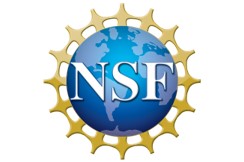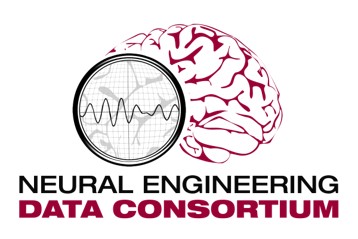FCCC Digital Pathology Data and Resources (FCCC DPATH)
Corpora:
FCBR |
FCCR |
FCDP
Documentation:
ANNO |
CHAP |
PRES
Instructions:
BROW |
RSYN |
DISK
To request access to the FCCC DPATH corpora,
please fill out
this form
and email a signed copy to
help@nedcdata.org.
Please include "Download The FCCC DPATH Corpus" in the subject line
or click on this
link.
Note this is an Adobe Acrobat form, and it is best filled out
using Adobe Acrobat or a similarly compatible tool. We suggest you
download a copy to your desktop and fill it out using a local app.
The forms must be filled out correctly or they will be returned to you.
Please follow the instructions on the form very carefully, including
completing the address information accurately. This is very important
and we cannot accept forms with incorrect addresses.
Once your form is accepted, you will receive the username and
password to our resources in a separate email, and be added to
our listserv. This usually takes about 24 hours. We need to track
who downloads the data. We also want to be able to inform
you of any updates to the releases.
Once you have obtained the username and password, you can selectively
download portions of the corpus using your browser. You can also
use the rsync interface described below.
Corpora
-
The FCCC DPATH Breast Tissue Subset (FCBR: v3.0.1): A 1,463 image subset of the FCCC DPATH Corpus that contains annotated breast tissue samples. A more complete description of the corpus is provided here.
-
The FCCC DPATH Breast Tissue Crystallization Subset (FCCR: v1.0.0): A 117 image subset of the FCCC DPATH Corpus that contains annotations of crystallization in tissue samples. A more complete description of the corpus is provided here.
-
The FCCC Digital Pathology Corpus (FCDP: v1.0.0): A corpus of 14,276 images that is described here.
Documentation
-
Annotation Guidelines (ANNO): A document that describes how we annotate digital pathology images for cancer/no-cancer decisions.
-
Book Chapter (CHAP): A book chapter that describes our digital pathology corpora and research methodologies.
-
Presentation (PRES): A presentation that summarizes our digital pathology research.
Instructions
All of our released corpora are now available these ways:
-
From the web at:
https://www.isip.piconepress.com/projects/nedc/data/
You can directly browse the directories and explore the data. This is convenient if you want to sample the data and explore formats, content, etc.
The username and password are the same as what you use to access the web-based version of these resources. If you do not have the username and password, register by filling out this form and we will contact you with registration information by email.
-
Rsync, which is available on Linux and Mac platforms, is our preferred way of downloading data. It allows you to easily keep your copy of the data in sync with ours.
Windows users can get access to rsync by installing MobaXterm. Some tips on how to install and use MobaXterm are here.
Before you attempt to download an entire corpus, you should test your ability to download data by executing this command:
rsync -auxvL fccc-dpath@www.isip.piconepress.com:data/fccc_dpath/TEST .
If for some reason this fails, change "-auxvL" to "-auxvvvL". This will generate a log file that your IT support team can use to diagnose the problems with your downloads.
Once this command works correctly, then you should go here to select the corpus you want to download. A typical rsync command to download a specific release (e.g., vx.x.x) of a specific corpus (AAAA) is:
rsync -auxvL fccc-dpath@www.isip.piconepress.com:data/fccc_dpath/AAAA/vx.x.x/ .
You can also download all versions of a corpus that are available on the server by dropping the version number:
rsync -auxvL fccc-dpath@www.isip.piconepress.com:data/fccc_dpath/AAAA/ .
Note that the "." at the end of this command is very important since it denotes the destination directory. Without a destination directory specification, the command will not transfer any data.
The username and password are the same as what you use to access the web-based version of these resources.
Note that the "-L" option in rsync instructs it to follow links.
-
If Internet connectivity is a problem, you can send us a 16T USB drive. We will copy the data to this disk and send it to you. You must arrange for postage as described below. If you elect this option, you need to send us a 16T USB drive and provide a UPS or FedEx account number for return shipping.
Please send us a conventional USB-mounted disk drive. We have had problems with other types of media such as thumb drives. Any standard USB-powered USB 2.0 compatible 16T drive, such as a Western Digital or Seagate, will work fine. Because of the time it takes to copy the data, we need a drive that can maintain a stable connection, and thumb drives have proven to be unreliable.
Mail the drive to:
Joseph Picone
1610 Rhawn Street
Philadelphia, PA 19111
Tel: 708-848-2846Please email us for details before shipping the drive. If you ship us a drive directly from a reseller such as Amazon, please make sure that the shipment contains information that we can use to identify you. This information should include a point of contact (POC), the name of your institution, and contact information (name, surface mail address and telephone number for the POC).
Please note that disk drives sent to international destinations will often get caught in Customs for weeks. Rsync is a much better option than going through your local governments.
If you are having trouble deciding what to do,
email us
and describe what specific resources in which you are interested.
We will be happy to guide you through the process.
 NSF MRI: High Performance Digital Pathology Using
Big Data and Machine Learning
NSF MRI: High Performance Digital Pathology Using
Big Data and Machine Learning
